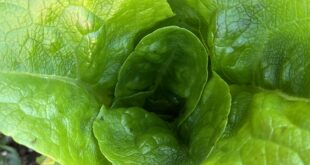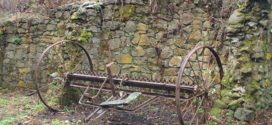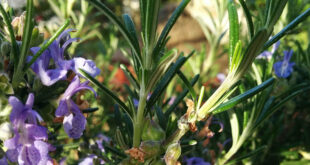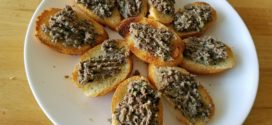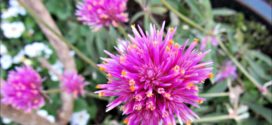Bibb type lettuces are known for their ‘buttery’ taste and velvety texture, and small loosely formed heads. Relative to most other lettuce types, Bibbs are slightly more tolerant of heat. Even so, they are best planted early or late in the season in spring, away from the intense summer sun. They may be started indoors several weeks prior to the …
Read More »admin
Pulgas Ridge Open Space Preserve
Pulgas Ridge is a small park, part of the Mid-Peninsula Open Space District, off of I-280 near Edgewood Road, just north of Edgewood County Park. There are about 6 miles of trails in the park with some great climbs and descents with amazing peninsula views. Most trails are single-track with a few paved road sections. The weather is usually mild. …
Read More »Pomegranate Syrup
Happy New Years Day 2017! We had a a fair harvest of pomegranates this past year. For the Christmas Eve dinner party, we opened the last of the fruit and tossed some into the salad. What to do with the leftovers? The answer is Pomegranate syrup. The syrup is sweet and tart. Use the syrup for basting BBQ, flavoring dressings, …
Read More »Clarkia concinna – Red Ribbons
Clarkia concinna is a species of wildflower in the Onagraceae (Evening Primrose) family known as Red Ribbons. It is endemic to California, where it can be found in the northern Coast Ranges from Santa Clara County to Humboldt County, and in the Sierra foothills. This is an annual plant with erect, herbaceous stems. The distinctive flowers have four looping sepals of …
Read More »Burleigh H. Murray Ranch near HMB
Burleigh H. Murray Ranch is a valley ranch located in San Mateo County inland from Half Moon Bay. The ranch was established in 1857 and became a California state park in 1983. There is only one trail and it parallels the creek running from the parking lot at the West end of the park back up the valley that fills …
Read More »English Daisy – Bellis perennis
English Daisies have long been popular for spring bedding, particularly in mild winter regions. Plants are biennial, usually lasting through one season, but self-seeding to provide future generations. This strain flowers well even in the first year, with little double button flowers of bright rose pink. Removing faded flowers regularly will keep plants blooming well into the summer. Often used …
Read More »Cyclamen – Latinia Salmon
Cyclamen is a great winter-flowering plant that loves light shade. You can grow in indoors or out. I am currently using them as a winter highlight in my former firepit. The red cyclamen is classic for the winter holidays. This salmon variety is also pretty. Strong stems bear vibrant, filly flowers well above attractive, silver-mottled leaves. In the summer, the …
Read More »Rosemary
Rosemary is one of those wonderful herbs that makes a beautiful ornamental plant as well as a welcome culinary seasoning. Its Latin name, Rosmarinus officinalis , means “dew of the sea” and rosemary is most closely associated with the cooking of the Mediterranean area. However you don’t need perfect sunshine, sea mist or even a never ending summer to successfully …
Read More »Olive-Anchovy-Capers Tapenade
The photo does not do justify to this olive-anchovy-capers tapenade. I used Mission olives that I harvested from my folk’s backyard and then cured at home.The olives were still tasty and not deadly. From seriouseats.com: Tapenade is named after capers, called tapeno in Provençal, a remnant of the fact that they once shared equal status with the olives. Truth is, …
Read More »Globe Amaranth
Globe amaranth is a compact annual that typically grows 12-24” tall on upright branching stems. The true flowers are insignificant, tiny, white to yellow trumpets that are only visible close up. It is the bright magenta bracts arranged in globose, papery-textured, clover-like flowerheads that provide the real show in a long summer to frost bloom. Cultivars expand the range of …
Read More »